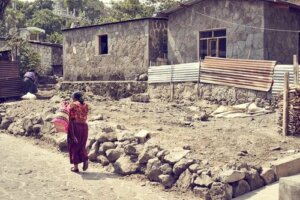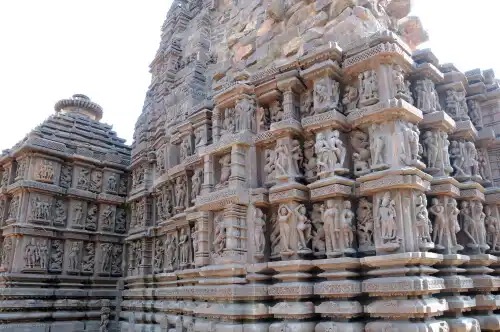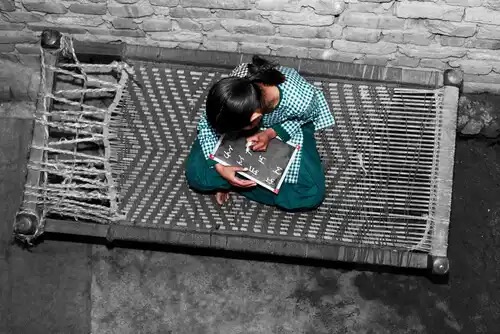Savitribai Phule, an Inspiring Indian Woman

Savitribai Phule was one of the most important women in the history of India. Indeed, she was considered a real threat thanks to her struggle against the caste system. She also defended the rights for education of the Dalit children, the “untouchables”.
The caste system is one of social stratification. The level to which people belong can only be determined by their birth. Therefore, it’s a solid and immovable system. In fact, it’s virtually impossible for people to change their position within it.
This system is the lynchpin of the Hindu religion. From a theoretical perspective, it’s based on two principles. The first is karma. This implies that birth into one caste or another depends on actions in previous lives. The second is Dharma. This is a complex concept that basically dictates that people must remain in the caste into which they’re born.
Savitribai Phule wasn’t alone in her struggle. Her husband, Jyotirao Phule, was a revolutionary who championed the same causes. Indeed, he fought tirelessly to overthrow this hierarchical, discriminatory, and immovable system of his country. Jyotirao was also a great philanthropist and educator, as well as an extraordinary writer.
Both were Dalits. In other words, the lowest layer of the Hindu culture, considered to be outside the caste system. They’re at the bottom of the social ladder and suffer poverty, unemployment, poor health, and housing. The term Dalit means “oppressed” in the Marathi language. It refers to those considered to be “too dirty” to be included in the caste system.

Early life
Savitribai Phule was born in Maharashtra in 1831. She married at the age of nine when her husband was twelve. It was an arranged child marriage. Both of them belonged to the Dalits. However, some of their family members were affluent farmers.
At the insistence of family acquaintances, her husband had managed to finish his high school studies. He became a businessman and municipal contractor. Although the couple never had children, they did adopt the son of a Brahmin widow.
Dalit schools
Savitribai and her husband soon became activists against the injustices committed against women. They also protested against the social caste system in general. Unfortunately, the poor education of non-caste children had a serious impact on their future and condemned them to sexual and labor exploitation. For this reason, the couple opened a school for girls. However, this turned their family against them.
They subsequently opened two more schools for Dalit boys and girls. Thanks to private donations from Europe, for the next ten years, they managed to keep the schools running. Then, there was an interruption in the donations. Without any government support, they had to close the schools.
Savitribai Phule and her defense of widows
As well as helping children, the couple continued their work by launching an act in support of the right of widows to remarry. Long-standing traditions prevented this occurrence due to problems concerning the transfer of property. As a matter of fact, a widow belonged to the family of the deceased husband. However, they weren’t obliged to support her.
Widows lost all their rights. They had their heads shaved and were told they were, effectively, dead. They weren’t kept but they weren’t free either. Sadly, some of these were girls who hadn’t yet even reached puberty. Savitribai opened a shelter for widows of the lower castes. She also took in many newborn girls to protect them from infanticide. Furthermore, she offered Dalits the possibility of drinking clean water.
Fighting to the end
When her adopted son was older, she opened a clinic with him in Pune. There, they cared for people suffering from the third bubonic plague pandemic in 1897. While working there, Savitribai became infected herself. She died the same year, at the age of 66.
Savitribai was a woman who fought against one of the most horrific social injustices created by man, the caste system. Furthermore, she undertook her brave fight against all odds, because she was both a woman and a Dalit.

The social gravity of the caste system
The origins of the caste system date back 3,000 years. This fundamentally religious system differentiates between four hierarchies or castes. At the top, are the Brahmins. They’re associated with purity and the color white. They represent intelligence. The caste is made up of priests, doctors, and intellectuals.
Secondly, are the Kshatriyas. They’re associated with energy and the color red. The third caste is the Vaishyas. They’re linked to the color yellow. They tend to be landowners and merchants. At the last level are the Shudras. They’re linked to the color black and include workers and peasants.
The caste system doesn’t even include the Dalits. In fact, hierarchically, they’re below everyone. However, the Indian government banned discrimination on the basis of the caste system in 1950. Nevertheless, it still occurs in many areas. In fact, the Dalits continue to be regarded as impure and are still subservient to the upper castes.
Even today, the government has to impose policies to curb the social exclusion and discrimination of this tradition, which surely has to be one of the cruelest in human civilization. For this reason, the legacy of Savitribai Phule remains to this day.
All cited sources were thoroughly reviewed by our team to ensure their quality, reliability, currency, and validity. The bibliography of this article was considered reliable and of academic or scientific accuracy.
- Sankaran, S., Sekerdej, M., & von Hecker, U. (2017). The Role of Indian Caste Identity and Caste Inconsistent Norms on Status Representation. Frontiers in psychology, 8, 487. doi:10.3389/fpsyg.2017.00487
- Pandey, J., & Varkkey, B. (2017). Impact of Religion-Based Caste System on the Dynamics of Indian Trade Unions: Evidence From Two State-Owned Organizations in North India. Business & Society. https://doi.org/10.1177/0007650317745867
- Budner, Sonia (2018) History Knitters, Collection in miniature of great women. Eleanor Roosevelt, Chapter 11. Independently published, ISBN: 978-1980572725
This text is provided for informational purposes only and does not replace consultation with a professional. If in doubt, consult your specialist.








